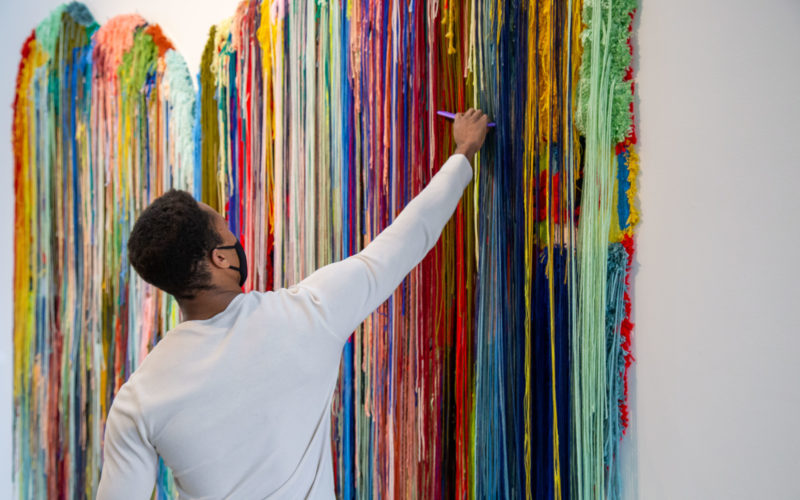Make a gift to help keep Atlanta Contemporary free, safe, and open to all.
Alix Pearlstein
Alix Pearlstein
The Dark Pavement
January 11, 2013 – March 16, 2013
Alix Pearlstein’s work in video and performance brings together groups of actors to explore scripted and improvised movements and dialogue. The results possess a sense of purpose and restraint, as the camera and participating bodies negotiate space together. For years, Pearlstein has created conditions of presence and perception, often in the closed environments of sound stages and seamless interiors. Her previous works, including Moves in the Field (2012), Talent (2009), Finale (2009), Distance (2006-2007), and Arena (2004), indicate the degree to which she is interested in formal structures, stages, and duration.
Based on these earlier productions, Pearlstein was commissioned by ACAC to make something new, and she quickly seized on the physical environment of the Center and adjacent streets. During a site visit, she identified several possible locations including the main gallery and lobby, the metal armature of the exterior pavilion, the derelict Bankhead Highway bridge, parking lots, and a graffiti-covered wall. This would be the first time in her career that Pearlstein would use exterior locations, and an entirely different set of actors and crew (she typically makes her videos with an established ensemble of New York collaborators).
The title, The Dark Pavement, comes from an account by artist Tony Smith of driving on an unfinished portion of the New Jersey Turnpike at night. Smith was inspired by the lack of lights, railings, and other markings, as well as the industrial towers and machinery. Pearlstein has seized on qualities of transition and lack of boundaries for her Atlanta-inspired work, and has used actors chosen from the local companies Out of Hand and Théâtre du Rêve to exploit these conditions.
Her video installation features sequences of action and stillness. In her production notes, Pearlstein states her intention to “trouble the affective space between the actor, viewer, and the site.” She effectively does this by uniting the filmed imagery with the architecture of the gallery and surrounding areas, making viewers aware of their own bodies occupying the same spaces in which actors performed tasks of walking, turning, clustering, and standing still. Pearlstein masterfully plays with the physical attributes of the diverse cast, shifts of wardrobe, lighting conditions, continuity, and perceptions of time. Throughout, the presence and orientation of the camera, and choices of editing, are keenly felt. In this way, the artist makes connections to the history of avant-garde and mainstream film, including Alfred Hitchcock’s Rope (1948), Michelangelo Antonioni’s Blow Up (1966), Michael Snow’s Wavelength (1967), and Chantal Ackerman’s D’Est (1993).
Pearlstein’s project articulates spatial situations that often go unnoticed, and ways in which sites can be newly occupied and animated. She addresses the liminal and the symbolic, like the stretch of planted trees and shrubs forming a parking lot oasis nearby, the dramatic gallery window (the result of a project by architects Brian Bell and David Yocum), a once important bridge, and a rarely visited basement storage space. The Dark Pavement makes one aware of the past, the present, and a range of possible futures made manifest by risk and togetherness.
Exhibition Press
Art in America: The Nothing Act
ArtsATL: At Contemporary, video artist Alix Pearlstein leaves the ordinary for “The Dark Pavement”
BOMB Magazine: Alix Pearlstein
